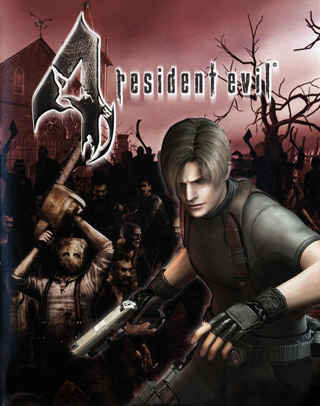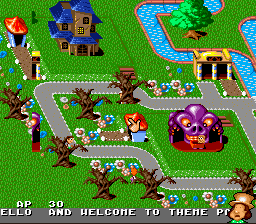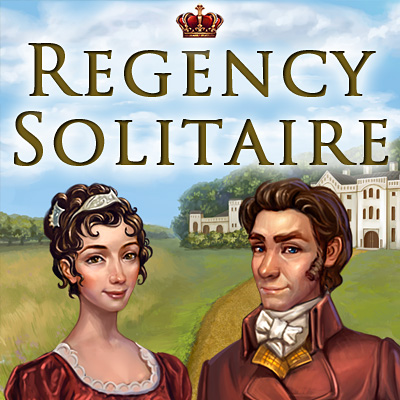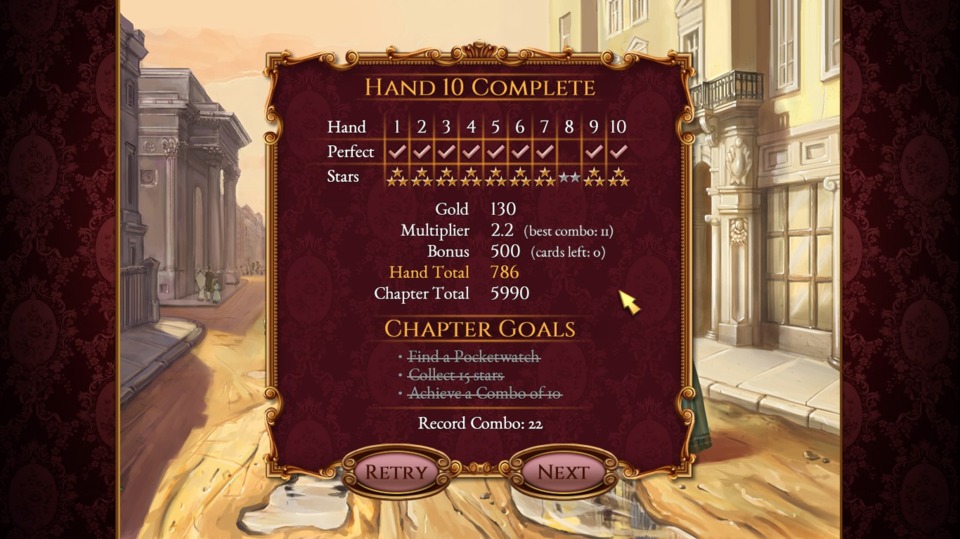Sunday Summaries 28/08/2016: Metal Gear Solid V & Regency Solitaire
By Mento 3 Comments
The "Video Game Bookmark" is a notion that I've been pondering a lot recently: the possibly unworkable notion that you can put aside a game for a while and come back to it at a much later time without necessitating a full restart. These figurative bookmarks have different shelf lives depending on the media: you could probably stop watching an episodic TV show for a week, which used to be the custom rather than the exception, and not lose anything in the interim. Conversely, media of a more serial nature, like chapters of a book or scenes of a movie, make those harder to put aside for long periods of time. The longer you put something away, the less likely it is that you'll be able to pick up where you left off without missing a beat.
Games are distinct in this regard. While many have plots that require your attention to follow, and may not have a means to get you caught up by way of journals or recaps, there's also the additional obstacle of reaching a level of competency with the controls and mechanics of the game that corresponds to where you are on the game's difficulty curve. Jumping into a challenging game near the end after your skills have had time to atrophy is a difficult prospect, and why Giant Bomb's "Load Our Last Save" feature can be compelling in its exploration of how much we are able to rely on muscle memory to tackle a game's end boss: what is usually its most severe challenge.
Backloggery can be a real enabler of this approach: the backlog-tracking site established separate game designations for "beaten" (silver medal) and "complete" (gold medal) that the user is free to define on their own terms, but it's the tradition that "beaten" refers to simply seeing the end of the game's story while "complete" involves achieving everything there is to do in the game - if you've designated something as "beaten", the implication is that you've left the door open to come back and finish off whatever optional content or additional playthroughs are left.
I've made surreptitious plans to return to several games I've beaten recently, though I know not when and in what order, and in planning these eventual revisits I've determined that some will be easier to jump back into after enough time has passed than others. In fact, each presents a different scenario to replaying a game from where you left off:
- With Tales of Xillia, I have Milla's side of the story to complete. Tales games always offer a New Game Plus mode, though I believe Xillia is the first case where you get to see the game's story told from the perspective of two protagonists, with character-specific areas and cutscenes that you won't see while playing as the other. However, with Tales games, the New Game Plus feature also serves to make subsequent playthroughs considerably easier; by using a currency earned from acquiring achievements/trophies and other milestone goals, you can purchase such difficulty-assuaging bonuses as decuple XP gain, double item drops and cash, carrying over end-game equipment, holding more curatives at once, etc. I imagine when I return, the game itself will be a breeze and I can simply appreciate its story again from a different perspective. With that in mind, a revisit to Xillia is perhaps one I could defer until next year without any risk of losing my way.
- Stardew Valley is a game I had to force myself to quit, but the nature of the game is simple enough to grasp and devoid of much in the way of story that I could jump back into it at any time without incident. However, it also has a multitude of gleaned tips and knowledge to remember - what crops are ideal for the season, which villagers like which presents, where you placed all the crab traps and tree tappers, how to maximize the iridium income from the Skull Cavern dungeon, various little secrets you can exploit for additional items - and you'd lose a lot of these reminders through memory entropy the longer you stay away from the game. I'm planning on making a return (perhaps getting a bit closer to completing some of the item catalogs or achievements) around December when it becomes time to write up GOTY blogs and I need a quick refresher. I don't think I'll ever be ready to leave the game behind until I have everything, and I'm sure if additional content shows up I'll want to be around for that too, but at the same time I'm also sure that I can leave my farm for a long period without worrying too much. There is also the lingering concern that I'll get attached to the cycle again if I boot it up, distracting me from new gaming experiences.
- Metal Gear Solid V: The Phantom Pain is the third and final of these hiatus games. I am presently still playing the game, but of the three here it's the one where skill atrophy will be at its most prominent if I choose to leave and come back at a far later date to sweep up whatever I have left to do. For that reason, I'm trying to get as much out of the game as I can before my predetermined deadline of September 1st. I absolutely want to see the rest of the game's story - I only have a handful of story missions left, as of writing - and I wouldn't mind completing some of the long-term achievements like certain side op chains, the non-vital "extreme difficulty" mission variants, and collections like music tapes, blueprints and rescued animals. Some of those, the extreme difficulty missions in particular, will not be easy to revisit several months later without a period of refamiliarizing myself with the game's controls and stealth mechanics, or the many different weapons and pieces of equipment that have specific conditional benefits. The prospect of trying to S-rank some of those missions after several months away seems... daunting.
(Before I commence with my usual Sunday Summaries segments, I want to congratulate both Patrick "Scoops" Klepek on the birth of his daughter Jessica, and the engagement of Dan Ryckert to his fiancé Bianca! Busy week for the Super Mario Maker boys.)
New Games!
The Summer slump definitely appears to have ended early as there's no shortage of new releases in this final week of August, matching the equally populous output of last week. All the same, there's not a whole lot here I'm interested in playing, but I suppose that's my cross to bear:

With no one significant release to highlight, let's just start with the anime and get it over with. Hatsune Miku: Project Diva X is out this week for North American PS4s and PS Vitas, giving players yet another batch of Dr. Sbaitso jams to rhythmically hit buttons to; the newest Omega Force licensed game Attack on Titan rears its ugly, enormous, skinless head to chomp the free time of anyone who has a hundred hours to drop into yet another Musou game; God Eater 2: Rage Burst (for PS4 and PS Vita) and God Eater: Resurrection (PC) will give MonHun fans plenty of big beasties to chip away at if they're already bored of last month's Monster Hunter Generations.
Elsewhere, we have DLC for a couple of big RPGs from yesteryear. Fallout 4 gets the dilapidated theme park add-on Nuka-World in which players can do their best Silent Hill 3 impressions, while the handful of CRPG fans who have been sitting on a The Witcher 3 playthrough will be Aard-pressed to ignore the new The Witcher 3: The Wild Hunt: Complete Edition out this week, which combines the core game with the highly acclaimed DLC packs Hearts of Stone and Blood & Wine and probably a few other DLC freebies to appease those who have already bought any combination of the above once already.

This week also sees the timely console port of a World War 1 sim that isn't the one with all the pot-smoking celebrities, Verdun; the thoughtful sci-fi first-person puzzler Turing Test, exclusive to Xbox One and PC; yet another Resident Evil 4 remaster ("Capcom is making a new video game, y'all!" "NO THEY AREN'T!") for current-gen consoles; Axiom Verge for the Wii U, as the first part in their horribly-named "Nindies" weekly series of downloadable releases (seriously, that's so bad it could be one of mine. Did I send them that in a drunken email I forgot about?); Claire: Extended Cut, an enhanced version of the Silent Hill-inspired Indie horror game (I checked out the original some time ago); and, lest I get reprimanded by "the boss of mods" Rorie, I suppose I should also acknowledge the new World of Warcraft: Legion expansion. I guess. Between the constant WoW expansions and the time-limited Overwatch cosmetic swag, at some point these people might as well mail Blizzard their credit cards.
Wiki!
Anywaaaay, we have some more wiki leavings to sift through for this last week of August. Another lean week for podcasts means another lean week of new updates: just ten more pages, leaving fifteen for our final home stretch sometime in early September. Two of those pages were brand new: the imaginatively-titled Battle Submarine, a strategy game involving a battle submarine; and Getsumen no Anubis, or Anubis of the Moon's Surface, a tense sci-fi horror visual novel that does the text-and-sound biz that Chunsoft became known for with games like Banshee's Last Cry and Otogirisou. Check the usual list for more info.
Here's the remaining eight:

- I was so disappointed with the SNES version of Bullfrog's Theme Park; I played the PC version briefly at a friend's house, and waited almost a year for my pre-order for the SNES version - built for a system I actually owned - to arrive. Though the SNES has managed decent ports of PC management sims before then - both SimCity and Civilization has its proponents - Theme Park was underwhelming. It lacked a lot of the PC version's features and the presentation was barebones, necessitated by a lack of memory space on the cart. A lesson well learned about ports for weaker systems.
- Mizuki Shigeru no Youkai Hyakkiyakou is a virtual board game I wasn't able to learn much about, besides that it was another one of those Dokapon-type RPG hybrids. The title refers to Shigeru Mizuki, the creator of GeGeGe no Kitarou and comic book artist known for creating comical versions of youkai, the mischievous, mythological Japanese spirits and monsters that inspired the Yo-Kai Watch menagerie of playful spooks.
- What's odd about 3x3 Eyes: Juuma Houkan, a 2D adventure game inspired by the 3x3 manga, is that I've only seen one other game like it for the Super Famicom: an earlier JoJo's Bizarre Adventure adaptation. The game spends its time between walking around safe environments talking to NPCs while looking for objects to use on other objects, and in action stages where you're required to jump around and hit things. I've absolutely no familiarity with 3x3 Eyes, besides knowing it was one of the earliest serial animes to really break into the Western market, so beyond the unusual genre mixing it didn't interest me much.
- All right, Farland Story 2 is notable if only because it helped to highlight how convoluted the Farland Story franchise is and how that necessitated a huge overhaul of some of its pages. The first Farland Story was exclusive to the Japanese PC-98 computer in 1992. This game led to a huge number of sequels on the same system. In 1995, Farland Story was combined with its first sequel, Farland Story Denki: Arc Ou no Ensei, to create an enhanced graphically remastered compilation of the two for the big consoles operating that year: Super Famicom, Saturn, PlayStation and PC-FX (the Saturn and PlayStation versions came a couple years later, since they also got a few CD-specific benefits). However, some versions of this compilation remake were just called "Farland Story", which meant we had one page for two discrete games. We also had a separate page for the remastered version as it was known for PlayStation, with the subtitle "Yottsu no Fuuin". What's really weird is that Wikipedia, GameFAQs and MobyGames all had it wrong too, and in differing ways. Using all three to get to the root of the matter, I believe Giant Bomb is now the only major video game wiki that has the Farland Story/Farland Story: Yottsu no Fuuin matter resolved. I think. Anyhoo, this particular game is not the sequel to that original Farland Story, but to its SFC remake Farland Story: Yottsu no Fuuin, moving the titular story a different direction than its original PC-98 sequels did. Hence, fans of the series consider this Farland Story 2 to be more of a non-canon "gaiden" game. What a mess.
- Thankfully, the plot of the Final Fight series remains constant: criminals want to take over Metro City, and its elected leader Mayor Mike Haggar refuses to let that happen. Final Fight 3 (Final Fight Tough in Japan, which is a better name) sees the return of Guy and the departure of Cody (who was probably in jail at this point), as well as the introduction of two new fighters: Lucia the hard-boiled lady cop and Dean the... lightning guy. Other than that, it's more or less business as usual, beating up flamboyant criminal punks on the mean streets of the beleaguered Metro City.
- Ganbare Goemon: Kirakira Douchuu is yet another Mystical Ninja game that never got its due overseas, perhaps for being too silly for us gaijin to handle. It once again feels like a missing link between the great SNES Mystical Ninja game and the equally fantastic N64 one, with players bouncing between the impetuous warrior Goemon, the effeminate thief Ebisumaru, the prideful kunoichi Yae and the robotic ninja Sasuke. They all have their own "chapter" of the game to complete, each with a different ability set and a different environment to master. The game also brings back everyone's favorite giant attack robot Impact, who actually triggers the plot by casually mentioning that he comes from a different planet that has been conquered by a sports-obsessed galactic tyrant. I love these games so much; I only wish Konami bothered to localize more of them.
- Kouryuu no Mimi is the most obscure game on this list: a single-plane brawler based on a manga about the scion of an ancient family that control a magical earring that lets him have power over money and women. Yeah, one of those types of mangas. The game's decent enough in pure brawler terms, though being stuck to just the one plane is limiting, but its plot goes some places. I mean, how often do you fight a guy with no skin and then set a woman on fire?
- The Super Famicom Lodoss Tou Senki game, a.k.a. Record of Lodoss War, is one that has a bit of fun with the dense mythology of the D&D-inspired novel and anime franchise it hails from. A strategy RPG with grids and such, the game follows four different characters in discrete scenarios. Two of those characters are legendary heroes in the chronology of the books/anime, and this game explores what happened to them between when they had their famous battle with the world-threatening demon lord and the present day of the books where they have become rulers of separate kingdoms, while the third scenario concerns the sympathetic body-hopping main antagonist of the whole series and gives you a glimpse into why they are the way they are. The fourth and final scenario, which ties everything together, has you control the "main" party of Record of Lodoss War and defeat the aforementioned main antagonist. An odd structure, for sure, but I figure the game assumes that its players are familiar enough with the source material to make sense of its fractured vignettes.
Metal Gear Solid V: The Phantom Pain!

Time for the usual weekly progress update. I just hit 64%, which isn't an exceptional boost from last time's 50%. However, I did manage to procure many more S-ranks, side ops and progress with my collections during this period, and I think I can reliably say that I'm close to the end. At least, more than close enough to finish the story - and complete two more observation blog entries - before the end of August. Boy, it should would be fun to write about something else for a change, huh?
Here's last week's update, at least: Part 6.
As stated in the lede, I'm not sure how much more of the game I'll do after that. There's a few side op chains that have story significance - right now I'm tracking down some child soldiers that escaped thanks to Eli's scheming, and there's also the rest of Paz's photographs to find - and I'm literally one animal away from a full petting zoo, which isn't a euphemism for my declining mental state after spending almost a whole month with Kojima's storytelling. I also just need to build two more platform upgrades, get a few more of my units to level 50, find three more music tapes and complete the handful of non-essential bonus missions and I think I can walk away happily enough and get started on Gravity Rush Remastered or Donkey Kong Country: Tropical Freeze or a thousand other games I've let pile up. The rest of the game's 100% requirements, which includes S-ranking every mission and completing all the bonus objectives for each, might have to take a hike. And I am definitely not building a nuke. Where would I even put it?
Regency Solitaire!

It is a truth universally acknowledged, that a single player in possession of four of the five perfect games they need to progress, must be in want of a wild card. And so might Regency Solitaire announce itself if its author was as big of a hack as I am, presenting its more elaborate take on Solitaire with a framing device of your typical Bronte or Austen tale of a destitute young woman from a noble house attempting to find a dashing gentleman suitor to keep her in the manner to which she has become accustomed.
Y'all (to use the Austen parlance) are probably familiar with the basics of Regency Solitaire thanks to an amusing Alex/Vinny Quick Look, where Alex acknowledged how much he was enjoying the game in spite of himself. I'd have to mirror that sentiment; there's something about the pacing of each "hand" of the game combined with the usual unpredictability that makes it more tense than the genteel period romance story going on in the background would suggest. It's mechanically simple, to the extent that I don't feel like I need to explain how Solitaire works, but there's no denying the simple thrills of turning over the last card in your deck to find the very one you need to remove the remaining cards from the table and complete a perfect game. The hands move swiftly enough that you start to develop a fast-moving rhythm, hitting everything that's within reach in quick succession and clicking through the deck until you find another card you can use. The game also throws boons and obstacles alike at you, letting you use your winnings to decorate Bella's manse with fixtures that also improve her card game in subtle ways, such as increasing the odds of finding wild cards and occasionally removing cards from play. There's also three abilities that you can use in a pinch, each of which recharges on a cooldown after use. Ultimately, however, if you crash and burn on one of the game's many challenges (like acquiring a certain number of perfect hands), it's down more to bad luck than insufficient skill and you'll do just fine starting over. I say that, but there's more than a few times I've accidentally drawn another card while a play was still available - the game gives you a handful of undos and shakes the card you could've used, to give you a push in the right direction.

I picked up Regency Solitaire in the same circumstances as I suspect many of you did, as one of the surprise bonus games from the recent (and presently ongoing, as of writing) Humble Indie Bundle 17. As a freebie, I didn't expect too much, so it was a pleasant enough surprise. I might try the two puzzle games that were also unlocked in the second week of the bundle, Expand and Hexcells, at some near juncture as well. Was kinda hoping for something as substantial as the rest of the bundle (I'm saving Galak-Z, The Beginner's Guide and Octodad: Dadliest Catch for a future May Mastery) but I can't really say I'm disappointed either. Regency Solitaire is the most casual of casual games - it'll even let you keep moving forward if you fail one of the levels - but I'll grudgingly admit it's worth trying out. In fact, I better back to it - I wouldn't want Bella to end up with that ghastly Mr. Bleakly because of her brother's financial woes! That simply would not do.
